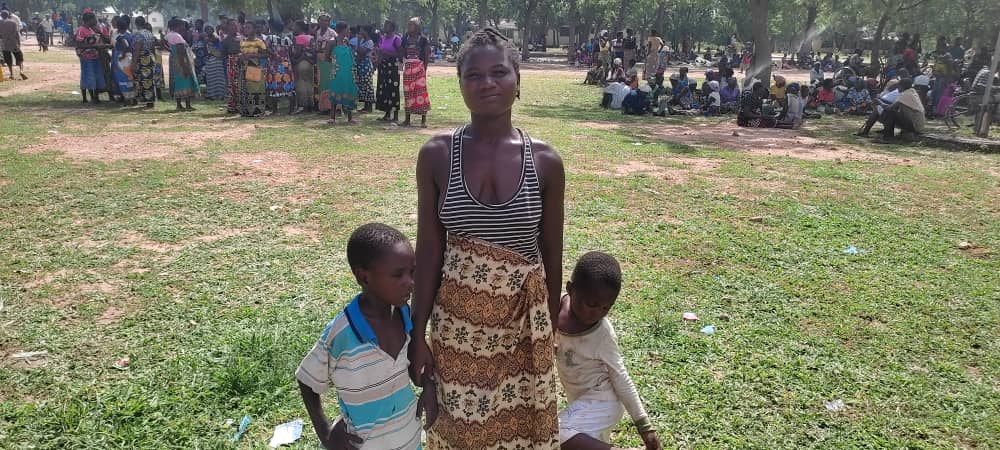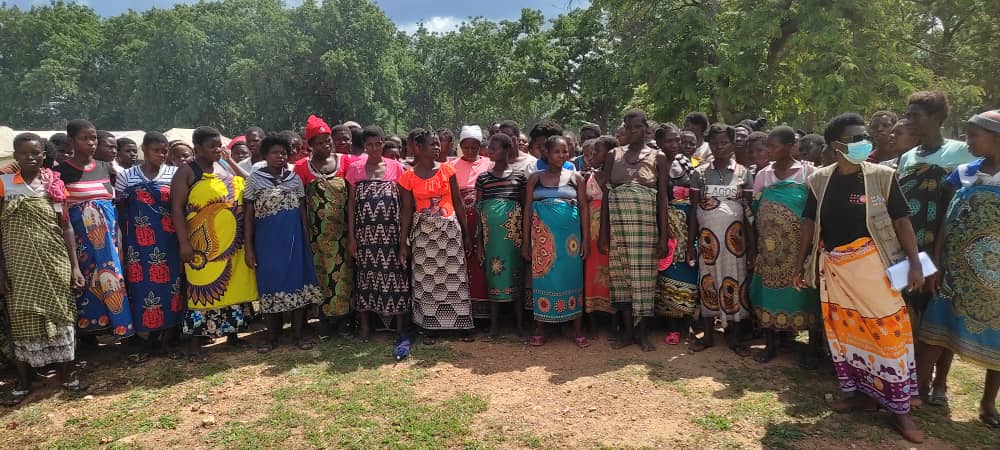On this Sunday evening, Monica Dimiwe (36) and her family gathered around a small battery-powered radio to listen to the evening news. During the day, word had spread in the village that a powerful cyclone had hit neighbouring Mozambique.

“The prospect of another cyclone was scary,” says Monica, who lives in Traditional Authority Mbenje in Nsanje District. “We lived through the same experience with Cyclone Idai and then Cyclone Kenneth. We had to rebuild from scratch.”
In hindsight, Monica wished she had moved her family to higher ground when she first heard about the cyclone. Now it was too late. The nearest disaster shelter- Nyambese camp, is located about five kilometres away from her village. Nyambese, is one of 18 camps that have sprouted all over Nsanje, sheltering people affected by Cyclone Ana.
The same evening, the weather suddenly changed. For almost six hours, the rains poured incessantly flooding the whole village. Cyclone Ana had arrived.
Cylone Ana brings widespread destruction
“I looked outside and saw the water levels rising. From prior experience, I knew we had to move to safety,” says Monica, who is six months pregnant. “I alerted my husband who quickly gathered the kids. We braved the heavy rains and walked all night to the centre, where we found so many people also seeking refuge from the floods.”
The next day, Monica and her husband trekked back to their home to see whether they could salvage anything from their house. Their worst fears were confirmed. Where their houses stood was now a paddling pool of water filled with rubble. Their food grain was gone, and their animals washed away.
“After seeing the destruction, I knew that Nyambese camp would be our home until the flood water subsides,” she says.
Camp condition puts women and girls at potential risk
According to the latest Nsanje Interagency assessment (IAA) report, a total of 36,070 households were affected by the disaster representing 83,060 individual total populations. The affected population is staying in ill-equipped camps, posing health risks, especially to the pregnant women.

“I lost everything,” says Monica cupping her face in her shaking hands. “Even my health passport. I was supposed to go for antenatal clinic this week but travelling to the health centre is not possible. The roads are bad and still flooded.”
UNFPA’s response during Cyclone Ana emergency
Access to Nsanje and Chikwawa, two of the hardest hit districts, by road is still a challenge. Medical supplies are running out of stock in the respective district hospital pharmacies including lifesaving drugs like oxytocin which is key towards preventing on post-partum hemorrhage.
UNFPA is working with the Ministry of Health and Population - Reproductive Health Directorate, to facilitate a comprehensive assessment on the capacity of health facilities to provide safe deliveries. Among other activities, UNFPA is working to have the district hospital generator repaired, and is planning to distribute reproductive health kits to affected communities in Nsanje and Chikwawa.
“We will do everything to ensure continuity of quality sexual reproductive health services including protection from gender based violence during the emergency,” says Young Hong, UNFPA Representative. “UNFPA will support recovery that will be aligned with long term health system strengthening and resilience of the affected communities and individuals, especially women and women.”
Joseph Scott and Olive Makuwira, UNFPA Malawi


